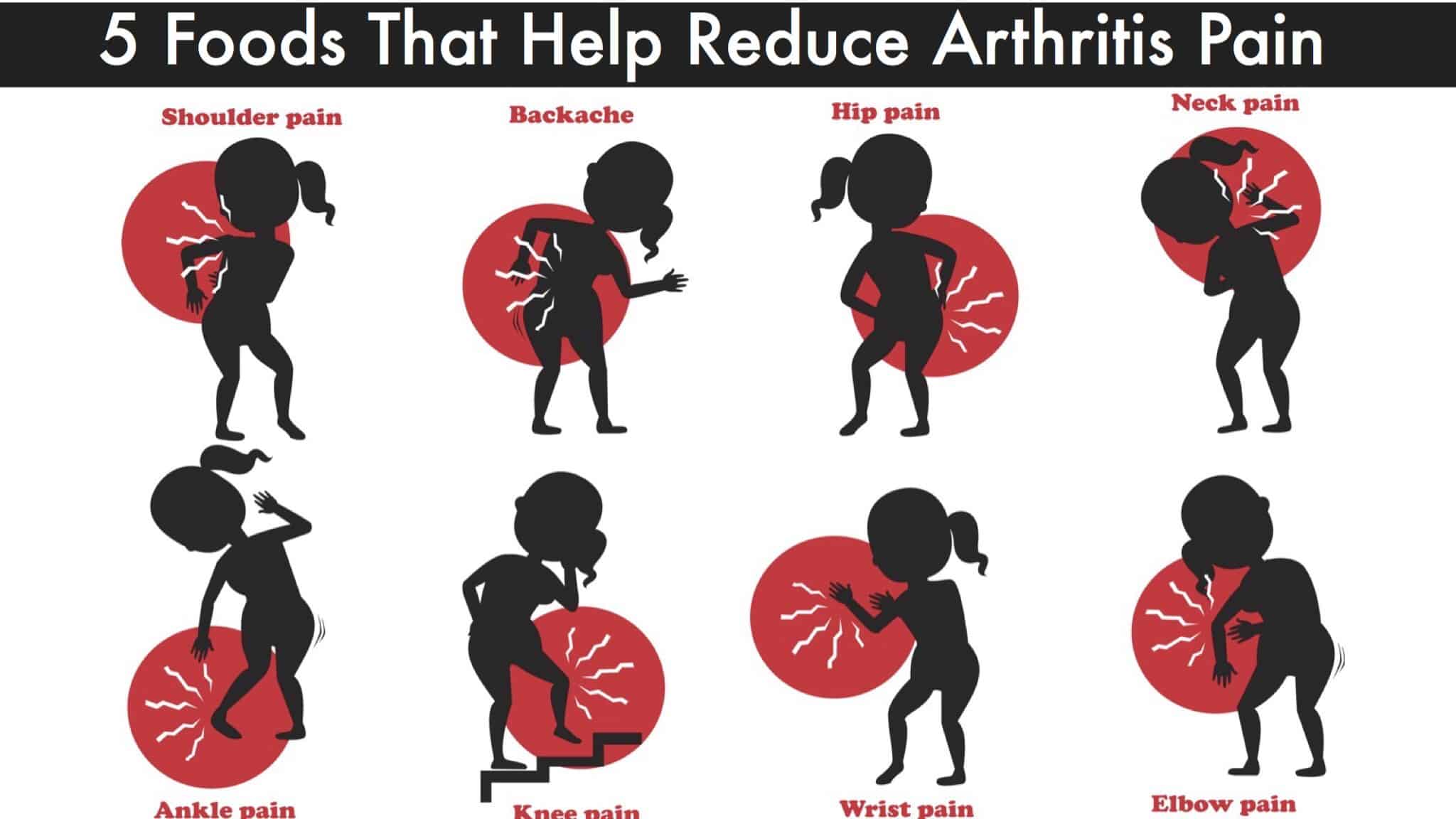In some cases, hand pain is nothing more than hand pain. Other times, however, hand pain can point to serious health problems. Although we rarely give them a second thought, our hands, which consist of 27 bones as well as numerous muscles, joints, tendons, joints, and connective tissues, allow us to perform a variety of tasks in our day-to-day life.
That said, when these tasks become difficult or painful, it could indicate a problem with our hands, such as carpal tunnel syndrome, for example. Of course, mobility problems and pain involving the hands can also signal something more serious. According to a study published in the International Journal of Cardiology, a slow gait coupled with weak grip strength could be an early sign of heart disease in older adults.
8 Things That Hand Pain Can Reveal About Your Health
Along with carpal tunnel syndrome and early signs of heart disease, stiffness, pain, and mobility problems, painful hands can also point to the following:
1. Arthritis
For many people, painful hands stem from either osteoarthritis or rheumatoid arthritis, the two most common forms of arthritis. And they each impact the hand and wrist in different ways. More common among older adults, osteoarthritis is a medical condition characterized by the gradual degeneration of joint cartilage and the underlying bone tissue.
It is worth noting that an estimated 32 million older Americans are struggling with osteoarthritis, according to a study published by the Centers for Disease Control and Prevention (CDC). When we are young, cartilage helps cushion the bones in our hands, which allows for pain-free joint movements.
Similar to other parts of the body, as we age, the cartilage in our hands start to degenerate. When this happens, it can cause pain and also decrease the range of motion in the hands.
Rheumatoid arthritis, on the other hand, is an autoimmune disease that can impact the lives of individuals who are young or old. Those who develop this form of arthritis will experience pain and stiffness in their hands due to severe inflammation.
Additional Symptoms Associated With Osteoarthritis or Rheumatoid Arthritis
In addition to painful and stiff hands, symptoms of osteoarthritis and rheumatoid arthritis can also include the following:
- Swelling
- Small cysts that form on the end of the fingers
- Noticeable changes in the appearance of thumb joints
- A grinding or grating sensation while moving the thumb or fingers
It is important to note that there are varying degrees of pain associated with osteoarthritis and rheumatoid arthritis. Those who develop either form of arthritis may experience the following type of pain symptoms:
- Pain upon waking up
- Dull or burning pain sensations that radiate from the fingers or wrists
- Pain after gripping an item or engaging in movements requiring repetitive motion
Treatments for Osteoarthritis and Rheumatoid Arthritis
For those who are struggling with pain and stiffness caused by either osteoarthritis or rheumatoid arthritis, you will be happy to know that several treatments can provide some much-needed relief from your symptoms, some of which include
- Prescription and over-the-counter pain relievers
- Corticosteroid injections
- Anticonvulsants
- Antidepressants
Along with these treatments, some individuals have achieved considerable relief from osteoarthritis or rheumatoid arthritis symptoms by undergoing occupational or physical therapy. In severe cases, however, some physicians may recommend surgery to their patients as a way to restore range of motion and resolve pain. According to the Arthritis Association, the two most commonly performed surgeries for those with arthritic hands include arthrodesis and arthroplasty.
2. Gout
Gout is another disease that can impact the hands before moving on to other parts of the body.
According to the Partnership to Fight Chronic Disease, an international organization committed to raising awareness when it comes to chronic diseases and healthcare costs, nearly 4 million people in America struggle with gout. For those who are unfamiliar with this medical condition, gout is another form of arthritis. However, unlike osteoarthritis and rheumatoid arthritis, which are characterized by gradual pain and stiffness, the onset of pain affecting the joints is sudden and much more intense.
Gout generally attacks the joint at the base of the hallux, also known as the “big toe,” first. However, it is not uncommon for it to start in the hands and wrists. Along with intense, excruciating pain, symptoms of gout can include redness, tenderness, stiffness, and a burning sensation.
Treatments for Gout
Some of the more common ways to treat gout include the use of corticosteroids and nonsteroidal anti-inflammatory medications. Additional treatment modalities include the use of colchicine. This particular medication reduces swelling and the build-up of uric acid crystals responsible for pain in the joint affected by gout. According to a study published by MedlinePlus, a part of the U.S. Library of Medicine, colchicine can also prevent gout flare-ups.
3. Lupus
For many people, painful hands may be a sign of lupus. In short, lupus, much like rheumatoid arthritis, is an autoimmune disease. And similar to other autoimmune diseases, lupus is the result of the immune system mistakenly attacking healthy tissue and cells in the body.
According to the Lupus Foundation of America, an estimated 1.5 million Americans are struggling with some form of lupus. Those with the condition often experience pain, inflammation, and swelling of the hands and wrists. Some of the other symptoms commonly associated with lupus include
- Thinning hair
- Fever
- Swelling of the legs
- Swelling around the eyes
- Pale or purplish fingers
- Muscle pain
- Pain while taking a deep breath
Treatments for Lupus
While there is, as of the writing of this article, no cure for lupus, there are treatments that can ease hand pain and many other symptoms typical of the autoimmune disease, including
- Prescription nonsteroidal anti-inflammatory medications
- Over-the-counter pain relievers
- Physical therapy
- Occupational therapy
- Cold or warm compresses
4. Peripheral Neuropathy
Along with arthritis, gout, and lupus, hand pain can also point to peripheral neuropathy, a condition that causes numbness, weakness, and pain in the hands. Peripheral neuropathy may also trigger the same symptoms in one’s feet. In either case, the condition is usually a byproduct of an underlying health condition, some of which include
- Diabetes
- Infections
- Metabolic syndrome
According to a study published by the National Institutes of Health, more than 20 million people in America are struggling with some form of peripheral neuropathy. Fortunately, there are quite a few treatments that can help ease hand pain and other symptoms associated with the disease, including
- Anti-seizure medications
- Antidepressants
- Neuropathic pain medications
- Over-the-counter pain relievers
- Prescription pain relievers
5. Ganglion Cysts
For those who might not be familiar with ganglion cysts, they are fluid-filled cysts that appear as a lump on the backside of the wrists. These noncancerous, fluid-filled lumps might be unsightly. However, they do go away on their own. Further, small ganglion cysts are not generally painful.
On the other hand, if they become too large, they can place a considerable amount of pressure on nerves in the wrist/ The growth then can trigger tingling, numbness, and painful sensations in the wrists and hands. Studies show that these noncancerous, fluid-filled lumps occur in 70 percent of individuals between the ages of 20 and 40 and are especially common among women.
6. Stenosing Tenosynovitis
Painful or stiff hands, especially involving the thumb or a single finger, can signify stenosing tenosynovitis.This condition can stem from several underlying health problems, some of which include rheumatic disorder, gout, and diabetes.
Studies show that individuals with stenosing tenosynovitis are unable to move their thumb or fingers in any direction. And this is due to the synovial sheath of the affected tendon being inflamed. As far as treatments, those who are struggling with stenosing tenosynovitis will usually receive corticosteroids, which are injected into the synovial sheath to improve mobility, along with nonsteroidal anti-inflammatory medications for pain relief.
7. Raynaud’s Disease
Raynaud’s disease is a medical condition that can cause tingling and throbbing sensations in the hands and feet. This condition is especially common among individuals with connective tissue disease or atherosclerosis.
Raynaud’s disease also causes blood vessels in the fingers and toes to narrow when they are exposed to cold temperatures. Generally speaking, the symptoms associated with this condition are usually mild and often go away once the fingers and toes become warm again.
8. Hand Injuries
Hand pain can sometimes be indicative of a muscle strain or a possible fracture. Either of these problems can cause swelling and restrict the hand’s movement.
Final Thoughts on Dealing With Your Hand Pain
In summary, hand pain, much like other symptoms, is the body’s way of signaling that something is wrong. That said, if you’re experiencing any of the symptoms detailed in this article, it would be a good idea to be seen by a physician sooner rather than later.























